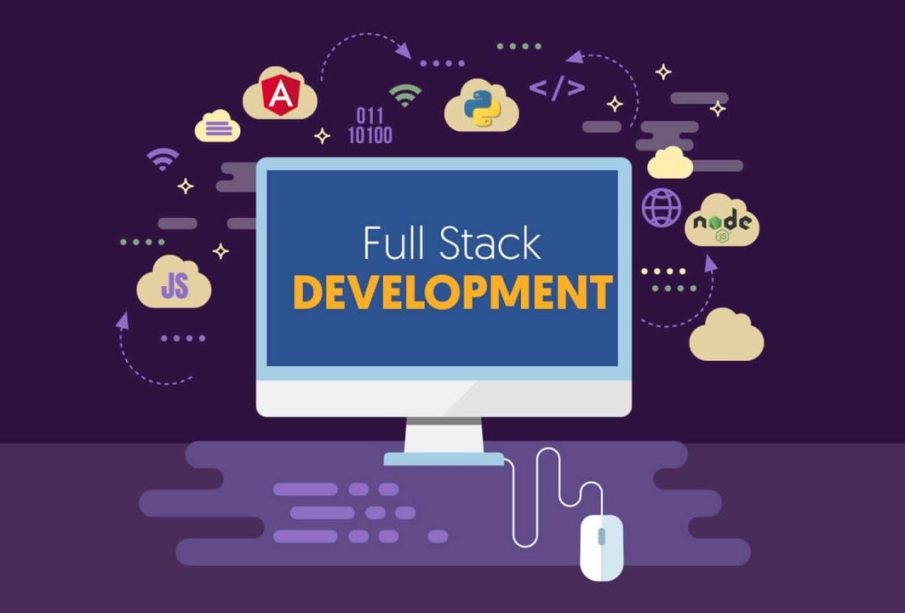Advanced Deployment Strategies for Multi-Environment Full-Stack Applications

When you build a full-stack application, writing the code is just one part of the job. Once your app is ready, you need to deploy it this means making it live so people can use it. But in real projects, you don’t just deploy the app once. You often need to deploy it to multiple environments, like development, testing, staging, and production.
This is where advanced deployment strategies come in. These strategies help developers manage the process of moving code through different stages safely and smoothly.
In this blog, we will explain what multi-environment deployment is, why it is important, and which strategies are commonly used. If you are attending a full stack developer course in Hyderabad, this blog will help you understand how real companies deploy their applications professionally.
What Are Deployment Environments?
Before we look at strategies, let’s understand what environments are.
Most applications are deployed in the following environments:
- Development: Where developers write and test their own code.
- Testing (QA): Where testers check the application for bugs.
- Staging: A copy of the production environment for final checks.
- Production: The live app that users can access.
Each environment has its own settings, databases, and servers. Moving your app from one environment to another needs to be done carefully to sidestep errors.
Why Multi-Environment Deployment Matters
In real-world development, code must be tested many times before going live. Having multiple environments ensures:
- Bugs are caught early
- New features are tested safely
- The app doesn’t break in production
- Developers and testers can work in parallel
These practices are part of the real-world project training in a developer course.
Key Concepts in Deployment
Before we dive into strategies, let’s look at a few basic concepts used in deployments:
- CI/CD (Continuous Integration and Continuous Deployment): Automates the method of building, testing, and deploying code.
- Build: The method of converting source code into runnable software.
- Pipeline: A set of steps that your code goes through before deployment.
- Rollback: Going back to an earlier version if something goes wrong.
These concepts are used in almost every advanced deployment strategy.
Strategy 1: Manual Deployment
This is the most basic method. Developers upload code manually to each environment using FTP or remote server access.
Pros:
- Simple to understand
- Good for small projects
Cons:
- Easy to make mistakes
- Hard to manage changes
- Not good for teams
This method is rarely used in big projects or in any developer course in Hyderabad because it’s outdated and risky.
Strategy 2: Automated CI/CD Pipelines
With CI/CD, every time you push code to Git (GitHub, GitLab, etc.), it is automatically built, tested, and deployed to the right environment.
Tools you can use:
- GitHub Actions
- GitLab CI/CD
- Jenkins
- CircleCI
Example:
- Push to dev branch → deploy to Development
- Push to test branch → deploy to Testing
- Push to main branch → deploy to Production
Pros:
- Fast and reliable
- Fewer manual errors
- Easy to track
Cons:
- Needs setup and configuration
- More complex than manual methods
Automated pipelines are standard in most companies and are often covered in projects during a developer course.
Strategy 3: Blue-Green Deployment
This is a safe way to release new versions of your app.
How it works:
- You have two environments: Blue and Green
- One (Blue) is live, and one (Green) is idle
- You use the new version to the Green environment
- After testing, switch traffic from Blue to Green
If something breaks, you switch back to Blue.
Pros:
- No downtime
- Easy rollback
- Safer deployments
Cons:
- Needs double infrastructure
- More expensive for small projects
This is a common strategy in enterprise apps and is often discussed in advanced modules of a developer course in Hyderabad.
Strategy 4: Canary Deployment
In this method, you release the new version to a small group of users first.
Steps:
- Deploy the new version to 5% of users
- Monitor for errors
- If everything is fine, roll it out to more users
This is useful for testing real-world behavior without affecting everyone.
Pros:
- Reduces risk
- Easier to catch issues
- Great for apps with many users
Cons:
- Harder to implement
- Needs monitoring tools
Tools like Kubernetes and feature flags can help with canary deployments.
Strategy 5: Rolling Deployment
In rolling deployment, you update your app server by server, one at a time.
For example, if you have 5 servers:
- Start with server 1 → update the app
- Then server 2, and so on…
Users always have access, and there’s no downtime.
Pros:
- Safe and steady release
- Works well for big systems
Cons:
- Takes more time
- Can be tricky to track issues
This method is often used in cloud apps and is part of DevOps training in developer course programs.
How to Handle Environment Configuration
Each environment (dev, test, prod) needs different settings. For example:
- Database URLs
- API keys
- Secret tokens
- Logging levels
Never hard-code these in your app. Use:
- Environment variables (.env files)
- Config files per environment
- Secret managers (like AWS Secrets Manager)
This keeps your app flexible and secure.
Database Changes in Multi-Environments
Sometimes your code changes also need database changes, like adding a new table.
Tips:
- Use migration tools (like Flyway or Liquibase for Java)
- Apply migrations in each environment separately
- Test on development and staging first
- Backup your production database before updating
Database safety is very important and is always taught in a good developer course in Hyderabad.
Monitoring and Logging
After deployment, you need to monitor your app:
- Is it working?
- Are there errors?
- How many users are online?
Use tools like:
- Prometheus + Grafana
- ELK Stack (Elasticsearch, Logstash, Kibana)
- Datadog
- New Relic
These tools help you fix problems fast.
Rollback Plan
Even with the best deployment strategy, things can go wrong.
Always have a rollback plan:
- Keep backup versions of your app
- Use version control (Git) to return to an old version
- Rollback database changes if needed
A smart rollback strategy is the sign of a professional developer and is a must-know topic in any Java full stack developer course.
Best Practices for Multi-Environment Deployment
- Use version control for all your code
- Automate as much as possible
- Test in lower environments before going live
- Use different databases for each environment
- Monitor your app after every deployment
- Document your deployment process clearly
Final Thoughts
Advanced deployment strategies help you deliver code safely and confidently. Whether you use blue-green, canary, or rolling deployments, the goal is to reduce risk and keep your app running smoothly.
You learned:
- What multi-environment deployment is
- Popular deployment strategies
- How to configure environments
- How to handle database updates
- The importance of monitoring and rollback
These skills are important for any full stack developer working on real projects. If you’re studying in a developer course in Hyderabad, make sure to practice these strategies during your course projects.
Start with simple deployments and move to advanced ones as your apps grow. With time, you’ll become confident in handling any kind of deployment in your full-stack journey.
Contact Us:
Name: ExcelR – Full Stack Developer Course in Hyderabad
Address: Unispace Building, 4th-floor Plot No.47 48,49, 2, Street Number 1, Patrika Nagar, Madhapur, Hyderabad, Telangana 500081
Phone: 087924 83183









